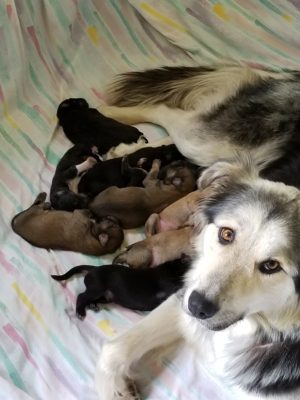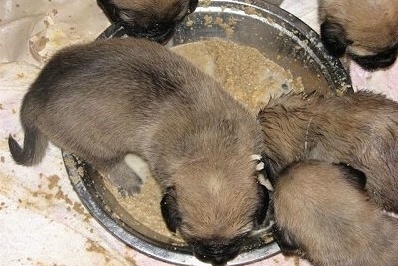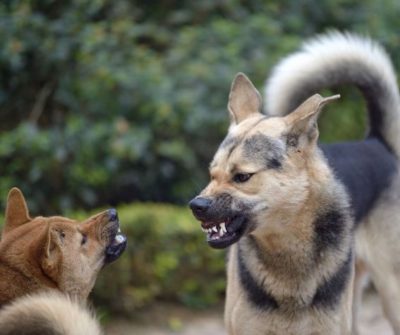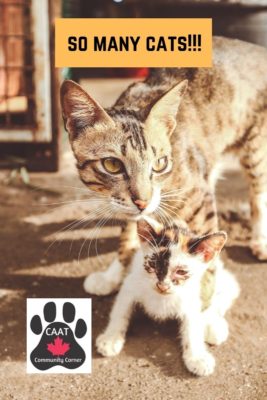Keeping your Mother Dog and Her Litter Healthy

Welcome to CAAT Community Corner. #CAATCommunityCorner
This edition is talking about the care of the mother dog and her puppies. We hope that these basic tips help you ensure your mother dog stays healthy during her pregnancy AND she is able to raise a healthy litter of puppies. Mother and pups need to be kept warm, dry and clean as well as have adequate food and water.

Pregnancy and Feeding
A dog’s pregnancy lasts for approximately 9 weeks. By the 4th week her appetite will start to increase as she tries to maintain her own healthy weight AND feed the puppies growing inside of her At this time, you should gradually increase the amount you feed her to at least twice her normal amount by the time the puppies are going to be born.
Feeding the Mother Once the Litter is Born
Once the puppies are born, the demand on the mother is even greater. She will need to continue to have a supply of plenty of food and fresh, accessible water, both essential for milk production. Remember, the larger the litter, the bigger the demand on her so keep feeding her extra to ensure she doesn’t get too skinny from the pups taking so much from her. She can require up to three times her normal amount of food during the first 4 weeks of raising the litter.
Puppies are born unable to hear or see for the first 14-15 days of life They are completely dependent on their mother to feed them, help them to poop and pee and to protect them. As their eyes open and their ears begin to have the ability to hear, they are still very dependent on their mother but are able to start to interact with their littermates.

Starting to Feed the Pups (beginning of weaning)
Weaning can slowly begin at 3-4 weeks of age BUT there is much more to it than just feeding solid food, it takes a full month to gradually and fully wean a litter and raise healthy pups. If you wean too quickly or too soon the pups will suffer and so will the mother.
To start weaning, at 3-4 weeks of age, have the pups separate from the mother just for meal time, 15 minutes or so 4 times a day. Add softened food in a shallow bowl for them to get used to eating. This can be kibble (ideally puppy food) that is softened by adding warm water to it, cover the bowl, wait 10 minutes until you can mix it into a mush/gruel. In the beginning it should be pretty runny, like a thin porridge. Add a little more water if needed to keep it thin. In the beginning they will end up wearing alot of the food as they stumble through it, just clean and dry them off when they are done. As soon as they are done, let mom back in.
They still need to keep nursing but gradually over the next month they need to be fed more food and nurse less. As the puppies grow and increase their solid food consumption, their gut cells change to be able to digest the solid food. As the puppies grow and learn to eat better, you can gradually thicken the mush by adding less water. You can add canned dog later on but that is more expensive than a watered down puppy kibble. It is also important to make sure they have a source of fresh water all the time. The mother will no longer clean up after her puppies as diligently, so clean out the area they are living (get rid of poop and wet areas daily) and keep them dry and warm. Wet, cold puppies won’t be healthy. Also, if they aren’t cleaned regularly, not only will it be very stinky for the owner caring for the litter but there is more chance of disease and parasites becoming an issue.
Ideally, puppies should not go to a new home until they are about 8 weeks old. WHY??? They don’t need to nurse past 6 weeks, it seems like letting them go a few weeks early shouldn’t make any difference BUT it really does. Here is what happens in those last couple of weeks…
CRITICAL stage to still stay with mother between 6-8 weeks
Between 6-8 weeks of age a good mother dog begins to interact very differently with her puppies, she will begin to spend less time with them and will begin to correct them for bad behavior. She changes from being the main source of food to giving puppies lessons in how to behave around other dogs. She will teach the puppies when they are biting too hard, and will growl and interrupt any other unwanted behaviors. This teaches the puppy to understand interaction, how to read another dog’s body language and signals. The mother dog is also nurturing, affectionate and comforting, which teaches the puppy how to enjoy and seek affection.
Check out our blog post about when a puppy can safely leave their mother and siblings…




